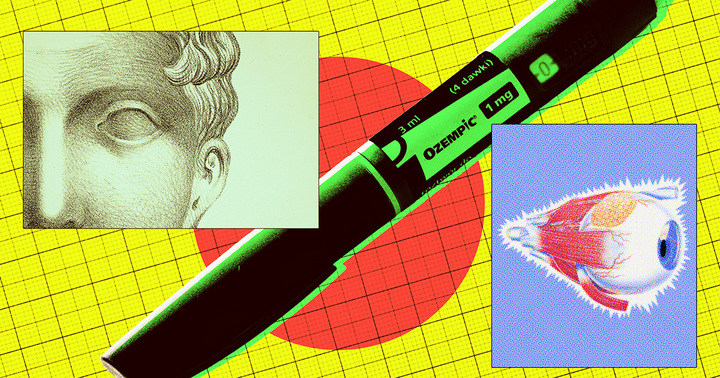
As drugs like Ozempic and Mounjaro continue to skyrocket in usage, doctors are encountering more cases linking them to severe eye conditions.
Last year, Harvard scientists found a troubling link between semaglutide, the active ingredient in Ozempic, and a blindness-causing condition known as nonarteritic anterior ischemic optic neuropathy (NAION), which is essentially a stroke of the eye. In a paper published in JAMA Opthalmology, those researchers suggested that people who take semaglutide are between four and seven times as likely to develop NAION as those who don’t take it.
Now, per a new paper published in that same journal, University of Utah researchers detailed the stories of several people who took either semaglutide or tirzepatide (the active ingredient in Eli Lilly’s Mounjaro and Zepbound) who developed eye conditions NAION and a few others that can cause partial or temporary blindness.
Led by Utah ophthalmologist Bradley Katz, the researchers looked into the cases of nine patients — seven who’d developed NAION, one case of an optic nerve inflammation disorder called papillitis, and another of paracentral acute middle maculopathy (PAMM), which causes a literal blind spot in your vision — who reported the issues soon after they began taking the drugs.
As the researchers note, all but one of the study subjects had a history of type 2 diabetes, and rapid drops in blood sugar like those that occur when taking drugs like Ozempic or Mounjaro — which belong to a class of medications glucagon-like peptide-1 (GLP-1) inhibitors that make those who take them feel fuller faster — has been linked to papillitis, and could be similar for NAION.
As far as why, one possibility is that the drugs could have caused hypoglycemia, or low blood sugar — and while lowering blood sugar is the goal of diabetes medication, some patients may be overshooting. In other words, the theory is that the drugs themselves aren’t making people develop blindness-causing illnesses, but the rapid drop in blood sugar may well be.
In an interview with Medical News Today, Katz explained how this mechanism may work.
“These drugs are very effective at reducing blood sugar,” he said, “and when one rapidly reduces blood sugar it can cause swelling in the optic nerve.”
The ophthalmological researcher suggested that this sudden drop in blood sugar “can also temporarily worsen diabetic eye changes.”
Instead of cautioning people against taking or continuing to use the drugs, however, Katz and his colleagues are calling on doctors to lobby the Food and Drug Administration (FDA) for better post-prescription tracking of the drugs and their potential adverse effects.
“We as well as other concerned physicians are also asking [the] FDA to mandate a post-marketing survey of these drugs to find the true incidence of eye complications associated with them,” he told MNT.
With a reported 13 percent of Americans admitting to trying out these popular weight loss drugs, there should indeed be more understanding about their potential — and sometimes very serious — side effects.
“Because so many people are using these medications,” Katz concluded, “it’s critical to monitor any ill effects on the eye or other parts of the body.”
More on GLP-1s: Doctors Have One Weird Trick to Tell When Their Colleagues Are On Ozempic